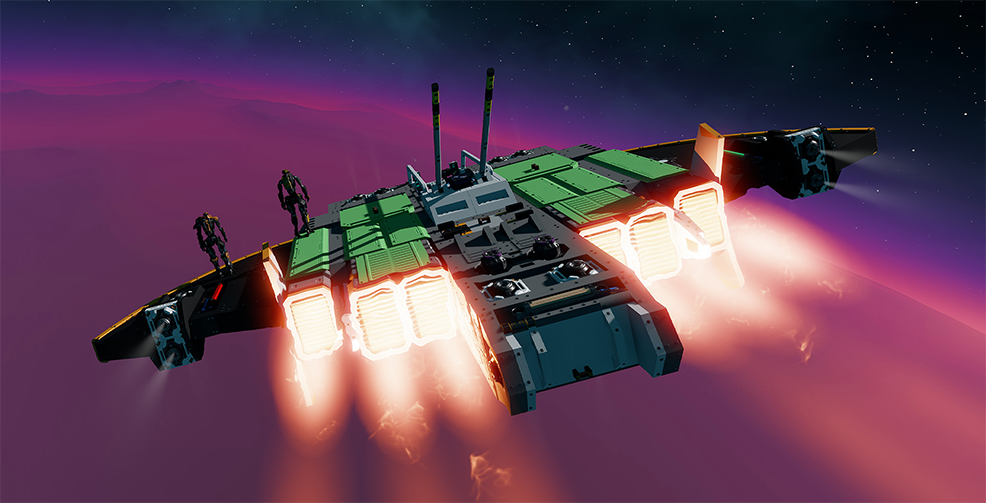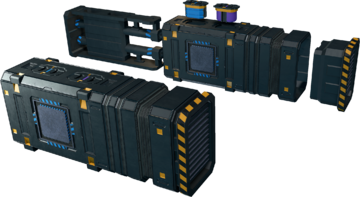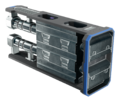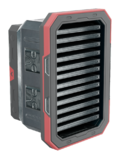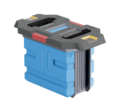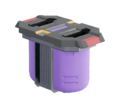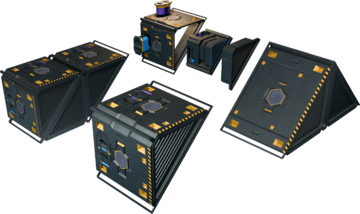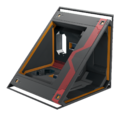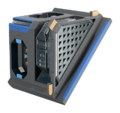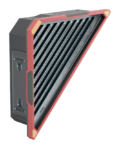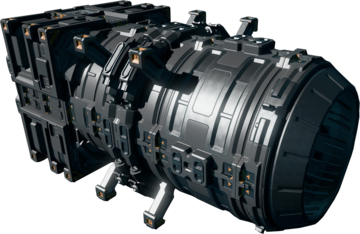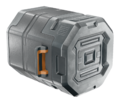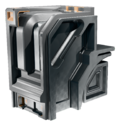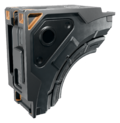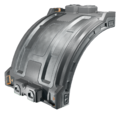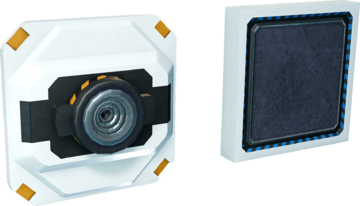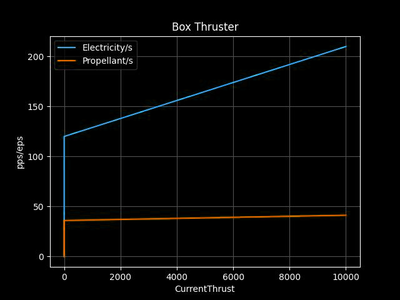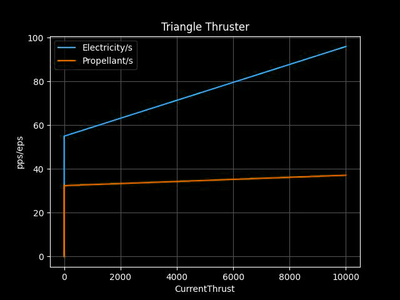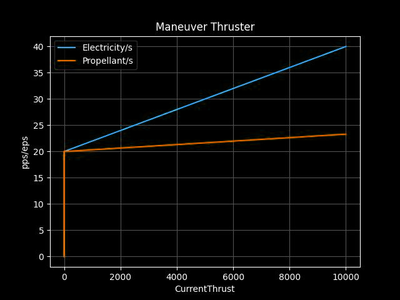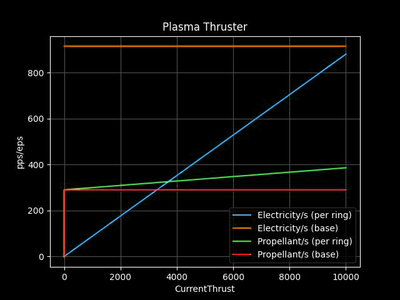Difference between revisions of "Thrusters"
m (Adding Japanese) |
m |
||
| Line 37: | Line 37: | ||
{{SB Infobox Compact | {{SB Infobox Compact | ||
|{{# | |{{#invoke:Transcluder|main|Box thruster|only=templates|templates=SB Infobox|makeLink=true}} | ||
|{{# | |{{#invoke:Transcluder|main|Triangle thruster|only=templates|templates=SB Infobox|makeLink=true}} | ||
|{{# | |{{#invoke:Transcluder|main|Plasma thruster|only=templates|templates=SB Infobox|makeLink=true}} | ||
|{{# | |{{#invoke:Transcluder|main|Maneuver thruster|only=templates|templates=SB Infobox|makeLink=true}} | ||
}} | }} | ||
Revision as of 07:36, 14 June 2021
Thrusters are a mandatory part of spaceships: Not only can a spaceship not move on its own without them, but the game defines a spaceship by their inclusion. Thrusters determine which directions a spaceship can be flown and at what speed, and they require power and propellant to function. Cables and pipes must attach a thrusters hardpoint to a network with sufficient power and sufficient propellant in order for them to function.
Basic information
- To be able to fly, a spaceship needs at least one thruster.
- Plasma Thrusters are the biggest thrusters so far, which can be upgraded to output more thrust. For full thrust they need a warm up time.
- Box and triangle thrusters are big "main" thrusters and consist of multiple parts that need to be bolted together.
- Maneuver thrusters enable small movements of the ship such as adjusting yaw and pitch, though they can still be used as main thrusters on smaller ships.
- Thrusters need to be bolted to a hardpoint that has access to propellant and electricity.
- The hardpoint a thruster is bolted to much be bolted to the beam frame of the ship for the thruster to function.
- Thrusters need to be in the same data network as both the flight control unit and main flight computer, if they are to be controlled by the main flight computer.
- Thrusters require power to function.
- A thruster also requires propellant to function.
- To get propellant, a pipe has to be drawn between the device hardpoint and a gas container.
- Plasma Thrusters will need an additional type of propellant in the future, called Karnite.
- This new fuel will come in the same containers as regular propellant does.
Thruster types
There are four different thruster types currently available:
- 210 e/s (all T1)
- 183.6 e/s (all T2)
- 297 e/s (all T3)
- 30.96 p/s (all T1)
- 26.966 p/s (all T2)
- 39.154 p/s (all T3)
- 500,000 (all T1)
- 550,000 (all T2)
- 650,000 (all T3)
- 96.2 e/s (all T1)
- 84.1 e/s (all T2)
- 136.1 e/s (all T3)
- 27.864 p/s (all T1)
- 24.369 p/s (all T2)
- 35.239 p/s (all T3)
- 300,000 (all T1)
- 330,000 (all T2)
- 390,000 (all T3)
- 40 e/s (T1)
- 36 e/s (T2)
- 60 e/s (T3)
- 17.4 p/s (T1)
- 15.7 p/s (T2)
- 20.97 p/s (T3)
- 40,000 (T1)
- 44,000 (T2)
- 52,000 (T3)
Device fields
Each of the four thrusters share a set of common device fields (below), but the plasma thruster has additional device fields owing to its unique characteristics.
| YOLOL field | description | range |
|---|---|---|
| ThrusterState | Requested output of the thruster | 0 - 10 000 |
| ThrusterCurrentThrust | Current output of the thruster | 0 - 10 000 |
In addition to these, the plasma thruster has two extra fields.
| YOLOL field | description | range |
|---|---|---|
| isactive | 1 = charge ; 0 = discharge | / |
| chargelevel | the current charge level of the plasma thruster, must be 1 to produce thrust | 0 - 1 |
To learn more about how to use fields, consult these wiki pages:
